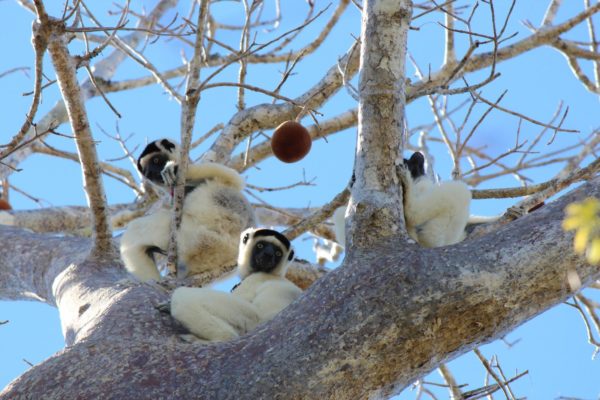AUSTIN, Texas — Social group membership is the most important factor in structuring gut microbiome composition, even when considering shared diet, environment and kinship, according to research on lemurs at The University of Texas at Austin.
The gut microbiome refers to the thousands of species of bacteria, viruses and fungi living in the digestive tract. Because of its significant impact on development, digestion and overall health, researchers have taken a strong focus on characterizing gut microbiome composition and how it is influenced by heritable, environmental and behavioral factors.
In new research published in the Proceedings of the Royal Society B, UT Austin scientists examined the impact of social networks on the gut microbiomes of wild Verreaux’s sifaka, a species of lemur, in Kirindy Mitea National Park in Madagascar.
“Like humans, wild primates often live in social groups that eat, sleep, groom and travel together,” said UT Austin epidemiologist Lauren Ancel Meyers, a co-author of the study. “These daily contacts fuel the transmission of bacteria and other microbes, both helpful and harmful.”
Studying fecal samples from 47 individual lemurs in seven social groups, researchers found that 57.6 percent of observed variation in individuals’ gut microbiomes could be attributed to group membership. Even when controlling for spatial proximity, genetic relatedness, mother-to-offspring transmission, diet and pairwise social interactions, researchers found that permanent social groups were the most important factor in shaping gut microbiome composition. Furthermore, more tight-knit groups had more homogeneous gut microbiomes.
“More than diet, kinship or habitat, it is the social network that predicts individual gut microbial communities in these social primates,” said UT Austin anthropologist Rebecca Lewis, a co-author of the study. “Thus, one of the benefits of living in a tight-knit group may be the social cultivation of beneficial gut microbes.”
Researchers also found that lemurs that received or initiated grooming or partook in scent-marking more frequently had greater gut microbial diversity.
“Typically, more socially connected individuals are considered to be vulnerable to infection or the ‘superspreaders’ of pathogens,” said lead author Amanda Perofsky, a Ph.D. candidate in integrative biology at UT Austin. “However, these animals may in fact be more resistant to infection because of their more diverse, stable microbiomes and contribute to the transmission of beneficial bacteria between otherwise disjointed parts of the population.”
Previous studies have considered the effects of social group membership and pairwise associations on primate gut microbiomes, but this is the first to consider group membership, pairwise associations and individual-level demographic, genetic and social connectivity in tandem.




